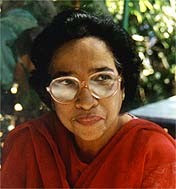Caroline’s brother Frederick William Herschel who was
twelve years her senior, rescued her from such a plight and took her away to
England to keep house for him. He was a musician who had settled in Bath. He
taught Caroline music and helped develop her voice. She became a well known
soprano and even began to sing professionally.
But her brother had a passion for Astronomy since
childhood. Though he was an outstanding instrumentalist, he gave it all up to
pursue his passion. He trained his sister to be his assistant. She gradually
began to share his interest in astronomy and worked closely with him.
However, the telescopes they could afford were small and
the images projected were often blurred. So the two worked together to build
their own telescope, until they were satisfied with the clarity of the images
it projected. William impressed on his sister that important discoveries could
be made only through systematically observing the heavenly bodies, their
interesting features and their relative positions in space.
When William discovered the planet Uranus in 1781,
Caroline was by his side. He was knighted and appointed court astronomer by
King George III. Meanwhile Caroline who had developed a keen interest in the
subject, made her own discoveries and observations. William had also trained her in mathematics.
In 1783, she discovered three new nebulae. On August
1st, 1786,
she discovered her first comet and was the first woman astronomer to do so. It
was called ‘first lady comet.’ Between 1786 and 1787, Caroline discovered eight
comets and several nebulae.
William began to
develop many more powerful telescopes. Caroline assisted him by grinding and
polishing the lenses. In 1787, King George III officially employed her as
William’s assistant. It brought in a modest salary of 50 pounds per annum. She
became the first woman to be paid for scientific services.
Caroline also helped her brother to develop a modern
mathematical approach to astronomy. Between them, they discovered 2500 nebulae
and compiled their findings in a new General Catalogue.
When William died in 1822, Caroline returned to Hanover,
but continued her work in fields of astronomy and math and also in cataloguing
nebulae. An asteroid was given her second name Lucretia and a lunar crater was
named after her.
In 1828 at the age of 75, she received a gold medal from
the Royal Astronomic Society. She became the first woman to receive honorary
membership of Britain’s Royal Society. On her 96th birthday, the
King of Prussia presented her with the Gold Medal of Science.
Caroline died at the ripe old age of 98 on January1st,
1848, and was buried at the cemetery Gartengemeinde, on 35, Marienstrasse,
Hanover. She wrote her own epitaph which is engraved on her tomb stone. “The
eyes of her who is glorified here below turned to the starry heavens.”
Though Caroline
Herschel was a dwarf in stature, God gave her the enviable gift of surveying
the heavens and reading the poetry of the stars.







